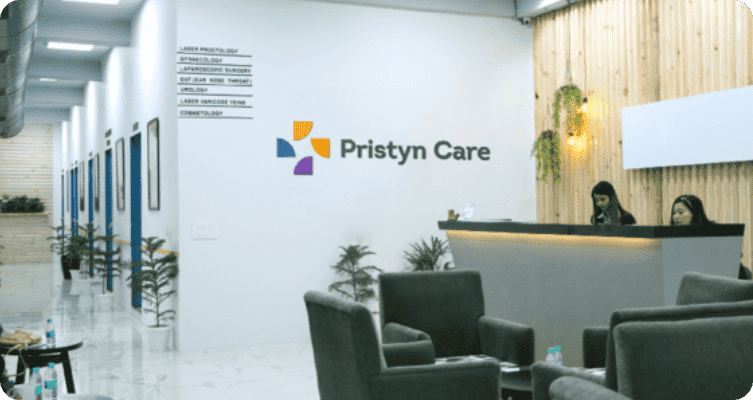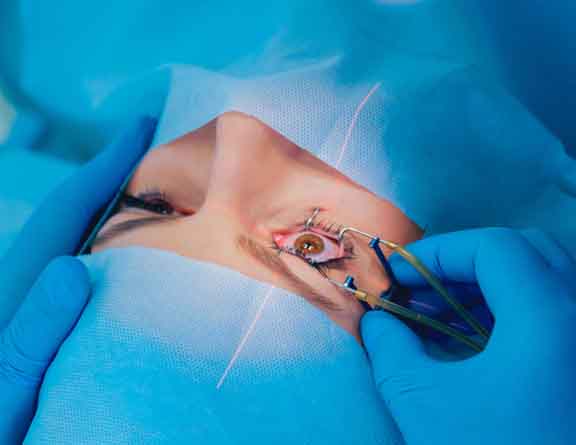How to choose the best hospital for LASIK surgery in Indore?
Finding the best LASIK eye surgery hospital in Indore is a challenging task. Every city has numerous hospitals with different levels of amenities. And every patient has different criteria for choosing the hospital or clinic to undergo LASIK eye surgery in Indore. Here are some key points that must be considered while making the decision-
- Quality of Service– Check how well the hospital staff tends to you and observe the environment closely. A good clinic or hospital follows the standard safety and hygiene protocols strictly and pays attention to the patient’s needs.
- Patient Experience- Do not forget to review the testimonials and reviews given by the previous patients. This will give you an insight into how the patients are treated at the hospitals.
- Treatment Cost- Every clinic and hospital charges a fixed amount for the treatments. You need to compare the treatment cost at different LASIK centers to find the one which is more affordable and provides optimal care without compromising the quality of service.
- Technology- Different techniques are used to perform LASIK surgery. And all medical centers don’t have all the latest technologies available. For instance, a LASIK center may use an excimer laser while others may use a femtosecond laser. So, make sure that you choose a clinic that has all technologies and doesn’t restrict your options for the type of LASIK.
Keep the above-mentioned points in mind and discuss them with your choice of doctor to make an informed decision.
What are the benefits of LASIK surgery?
By undergoing the advanced LASIK surgery, you experience the following benefits:
- Complete vision restores usually on the same day
- No need for hospitalization
- The surgery is completely safe
- The procedure is quick and minimal pain
- No stitches are involved
- The outcomes are as expected
- Freedom from wearing eyeglasses and contact lenses
- Further adjustments can be made if required.
Due to all these benefits, more and more people who suffer from blurred vision are opting for LASIK surgery to resolve the problem and get long-lasting results.
How to prepare for LASIK Eye Surgery?
- If you are an eligible candidate for LASIK surgery, the eye specialist will advise you to follow the tips below and to take some precautions to ensure that there are no complications during the procedure and your eyes respond well to the treatment. These tips include:
- Stop wearing the contact lenses before having LASIK. If you wear soft contacts, you’ll have to stop at least a week before the surgery. And if you wear hard contacts, you will have to stop wearing them at least a month before the procedure. This is important because wearing contact lenses can alter the shape of the cornea and affect the results.
- Wear loose and comfortable clothes as you’ll be undergoing surgery in those same clothes. It is important that you follow this advice and wear clothes that are appropriate to wear in the operating room as well.
- Ask your friend or family member to drive you back from the surgery center. Though you won’t be asleep during the procedure, the anesthesia will still have some lingering effects. Therefore, it is not safe for you to drive yourself.
- Avoid wearing any makeup, perfume, or lotions on the day of surgery as these products act like contaminants for the face.
- Do tell your surgeon about your medical history and any medication you are allergic to. This may impact the outcome of the surgery and the precautions you’ll have to take after surgery.
Benefits of LASIK Eye Treatment
LASIK treatment has become a popular way to restore clear vision in patients over the years. This is because it has many aspects that are beneficial for the patients. The key benefits of the LASIK eye treatment are:
- Improved Vision- The patient can achieve 20/20 vision or perfect eyesight after LASIK.
- Safety- The latest advancements and innovations in laser vision correction procedures make the surgery safer and precise.
- Faster Healing- Being a minimally invasive surgery, LASIK has less downtime for the patient and the healing is also quick.
- Minimal Complications- There are very few complications of LASIK surgery and even those ones can be managed with certain medicines or precautionary steps.
- Less Expensive- Compared to the amount of money you spend on contact lenses, frames, and contact solutions over the years can easily make up for the expenses of LASIK surgery. And you’ll save more money when your vision is clear and you no longer need visual aids
- Additional Adjustments- Another great benefit of LASIK is that if needed, you can undergo the procedure again to further adjust your vision if it changes.
Due to all these advantages, people are becoming more inclined to LASIK and other latest forms of vision correction too.
What are the different types of LASIK surgery?
As there are different types of LASIK eye surgery available, patients often have a hard time determining which laser procedure is the best for the eyes. LASIK itself is a type of refractive surgery that is performed with the help of a laser. People have heard many names for LASIK, such as Femto LASIK, Contoura LASIK, Smile, etc.
However, you should understand that the primary difference between these types of surgeries is the type of laser used. It is either an excimer laser or a femtosecond laser that is used to carry out the procedure or the technique is slightly different.
But there are many other types of refractive surgeries that can help a person to correct vision problems. These different types of vision correction procedures are:
- LASIK- It can help to treat myopia, hyperopia, astigmatism, and presbyopia. LASIK is one of the most popular refractive surgeries and comes under blade-less procedures as a laser is used to cut the corneal flap.
- PRK- Photorefractive Keratectomy was the first technique that involved using lasers to correct vision problems. It can help to treat myopia, astigmatism, and presbyopia but not hyperopia. The key difference between LASIK and PRK is that it is done by removing the outer layer of the cornea whereas, in LASIK, only a small flap is created and lifted to reshape the cornea.
- ASA- Advanced Surface Ablation is similar to PRK but uses Zeiss excimer laser to ablate the cornea and reshape it to provide clear vision. It can treat myopia, astigmatism, and presbyopia.
- LASEK- Laser-Assisted Subepithelial Keratomileusis is also similar to PRK. But unlike PRK where the flap is created and removed, in LASEK, the flap is created and pushed to the side of the cornea where it remains attached to the eye. After surgery, the flap is repositioned and a bandage contact lens is placed on the eye to keep the flap in place as it heals. It can be helpful to treat myopia, astigmatism, and presbyopia. But you should know that LASEK is not USFDA-approved.
- EPI-LASIK- Used for correction of myopia, astigmatism, and presbyopia, EPI-LASIK is another variation of PRK. The flap of the outer layer of the cornea is created with the help of a special tool called an epithelial separator. It is also not approved by USFDA.
- LBV- Laser Blended Vision is a technique that helps to correct presbyopia only. It treats the dominant eye for distant vision and the non-dominant eye for near vision. It is a US FDA-approved technique.
- SMILE- SMILE stands for small incision lenticule extraction which is a new blade-free technique that uses a femtosecond laser to create a lenticule shape in the corneal tissue. The lenticule size and shape are adjusted to correct the refractive error of the patient. It is not approved by the FDA for myopia of less than 1 Diopter and neither for astigmatism or hyperopia. Therefore, it can only be used to treat high myopia.
Other than these techniques, there are other laser-based procedures that can correct refractive errors and treat other eye disorders like cataracts, glaucoma, diabetic retinopathy, etc.
LASIK Surgery After Care
Pristyn Care doctors provide a detailed recovery guide to ensure that you recover quickly and smoothly. Keep in mind that the outcome of LASIK surgery depends on aftercare to a great extent. The ideal recovery time is one month during which you will have to take extensive care of the eyes and follow every advice and suggestion given by your doctor.
Some common care tips after LASIK surgery includes-
- Avoid touching or rubbing your eyes as it can cause irritation and displace the flap.
- Use eye drops as directed by the doctor for quick healing and to avoid side effects, such as dry eyes.
- Keep your eyes protected from dust, dirt, UV rays, and even from strong chemicals that produce gas as they can cause irritation in the eyes.
- Do not indulge in physical exercises or any kind of sports that can put a strain on the eyes or damage them.
- Avoid using soap, hair, and makeup products for the first few days after surgery.
- Give your eyes enough rest and don’t watch digital screens, including TV, mobile phone, laptop, etc.
- Do not take showers, bathe in hot tubs, or swim for at least a week.
- Eat a healthy diet composed of fresh fruits, green leafy vegetables, and fiber-rich foods that are beneficial for overall eye health.
- Take regular follow-ups with the doctor to ensure that your eyes are healing properly and there are no signs of potential complications.
To book a consultation with our LASIK surgeons in Indore, you can give us a call or fill out the “Appointment form.”









.svg)









